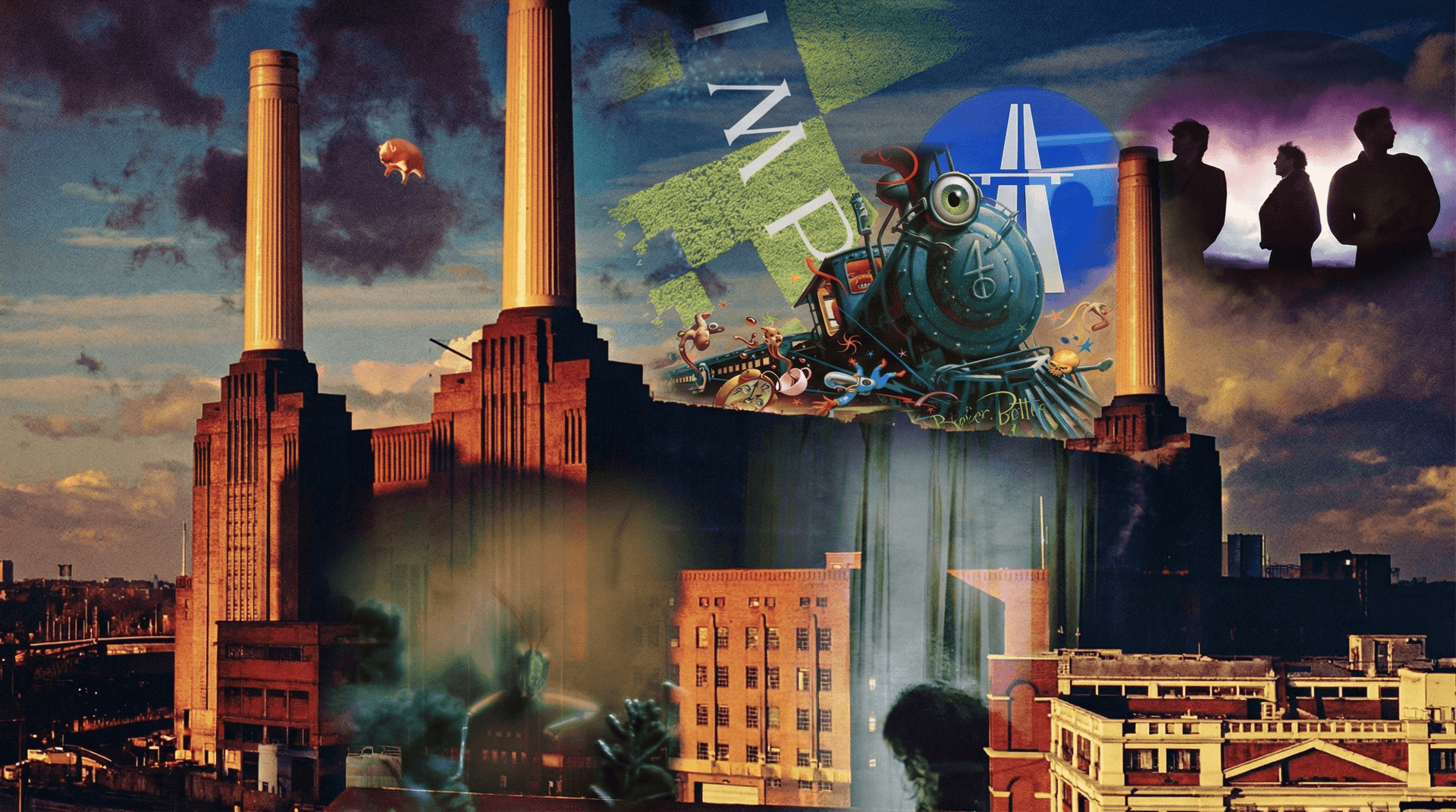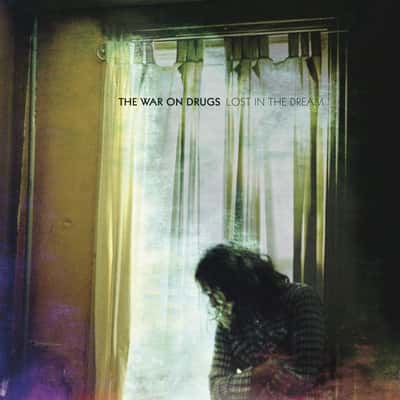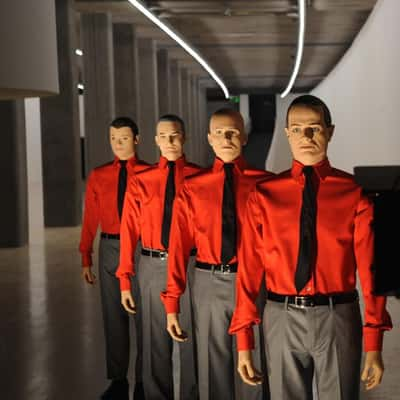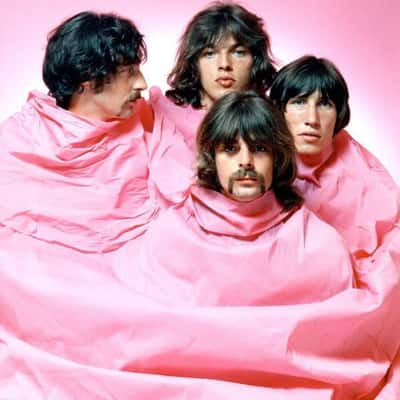
Eclectic Journeys: 4 Non Blondes to Pink Floyd Explore Musical Eras
Bigger, Better, Faster, More! by 4 Non Blondes 🎤
Recording Journey 🎶
4 Non Blondes, an iconic alternative rock band hailing from San Francisco, burst onto the scene with their debut album, Bigger, Better, Faster, More!, released on October 13, 1992. The band, led by the fiery Linda Perry, found their musical voice within the rich tapestry of early 90s rock. Recording took place in a small basement studio, where the band crafted a sound that was raw yet polished, combining elements of folk, rock, and a sprinkle of punk attitude. The amalgamation of genres was fitting for the time, as the music world was on the brink of alternative rocks explosion.
What makes Bigger, Better, Faster, More! particularly unique is its blend of introspective lyrics and catchy melodies, which became a staple for the band. The standout track Whats Up? was written by Perry and transformed into an anthem of empowerment and social issues that resonated with a generation. The song was inspired by Perry’s frustration with the world around her, a feeling that was palpable and relatable. As she belted out those now-iconic lines, listeners felt their own struggles echoed back at them.
Cultural Impact 🌍
Upon its release, the album quickly gained momentum, thanks in part to the relentless promotion by radio and MTV. Whats Up? became an anthem for the disenchanted youth looking for change. It reached the top of various charts and remains one of the enduring classics of the era. The juxtaposition of Perry’s powerful voice against the backdrop of a burgeoning alternative scene captures the essence of early 90s music culture.
The songs music video, characterized by vibrant visuals and Perry’s impassioned performance, garnered heavy rotation on MTV, contributing to the album selling over six million copies worldwide. Its legacy endures today, often featured in films, commercials, and TV shows, reminding listeners that the fight for understanding and connection persists across generations.
Legacy and Influence 🏆
Though 4 Non Blondes disbanded in 1994, the impact of Bigger, Better, Faster, More! and particularly Whats Up? is undeniable. The song has become a touchstone for artists across genres, inspiring contemporary musicians like Halsey and Billie Eilish, who cite the band’s blend of vulnerability and strength as influential to their own work.
Linda Perrys career post-4 Non Blondes flourished as she became a sought-after songwriter and producer, working with top artists such as Christina Aguilera, Pink, and Gwen Stefani. Her unique songwriting ability, honed during her time with 4 Non Blondes, enabled her to carve out a niche in the industry that emphasizes authenticity and emotional resonance.
The album serves as a snapshot of a pivotal moment in music history, capturing the zeitgeist of the early 90s, when youth sought to voice their concerns and emotions amidst a landscape rife with change. As we look back on Bigger, Better, Faster, More!, we see not just a singular hit record, but a significant cultural artifact that has weathered the test of time and continues to inspire and empower. 🎉
Street Fighting Years by Simple Minds 🎸
The Political Pulse 🎤
Released on May 8, 1989, Street Fighting Years marks a significant moment in Simple Minds discography, intertwining the bands atmospheric sound with a politically charged narrative. The album is a poignant reflection of the late 1980s, a time when global political strife was palpable. The title track serves as a tribute to Chilean poet Victor Jara, a victim of regime brutality, where Jim Kerrs impassioned vocals resonate with the urgency of social justice. This creative choice sparked conversations, marrying the themes of music and activism, and transforming the album into a powerful anthem of its time. 🌍
Musical Evolution and Innovation 🚀
Street Fighting Years showcases a sonic evolution for Simple Minds, transitioning from their earlier synth-pop roots into more complex soundscapes that incorporate orchestral elements and rock influences. The use of strings and brass on tracks like Kick It In reflects a newfound ambition and an exploration of genres that were previously unexplored by the band. This innovative approach not only broadened their musical palette but also resonated with bands that followed, hinting at the burgeoning rock sound of the early 1990s. 🎼
Cultural Impact and Reception 🌐
Upon its release, the album was met with mixed reviews; however, its significance cannot be understated. The track Belfast Child, a haunting reflection on the political troubles of Northern Ireland, resonated with audiences, eventually topping the UK charts. The album not only found its place in the charts but also in the hearts of fans who saw it as a call to action during a time of societal upheaval. It encapsulated a moment where music served as a bridge between art and activism, urging listeners to engage with the world around them. 🗳️
Personal Stories from the Band 🎙️
Jim Kerr and his bandmates have shared that while recording Street Fighting Years, the atmosphere was electric, infused with a shared passion for the themes they were exploring. The recording sessions took place in various locations, including the iconic The Orpheum in Los Angeles, where the band felt a palpable connection to the city’s tumultuous political climate. Kerrs memories of these moments evoke the fervor and intensity that the band poured into their work. The album captures not just their musical evolution but also the urgency of the issues they addressed, making it an emotional pilgrimage for both the band and their listeners. ❤️
Legacy and Influence 🏆
Street Fighting Years stands as a testament to the power of music in addressing social and political issues. Its bold narratives paved the way for future artists to explore similar themes, influencing genres such as alternative rock and indie music in the years that followed. The albums legacy continues today, with its tracks being referenced in conversations about musics potential for social change, illustrating how art can wield influence in the face of adversity. As we commemorate its 35th anniversary, Street Fighting Years remains a vital piece of musical history, reminding us of the role artists play in shaping cultural dialogues. 📅
Through its intricate blend of music and message, Street Fighting Years continues to resonate, encouraging a new generation to find their voice in the fight for justice, making it a timeless work that goes beyond its era.
Katy Lied by Steely Dan 🎷
The Studio Chronicles 📼
Released on March 27, 1975, Katy Lied marked a significant chapter in Steely Dans story of innovation and meticulous artistry. After the vibrant textures of their previous works, Donald Fagen and Walter Becker took a more clinical approach to recording. This album was primarily realized using studio musicians, allowing the duo to craft a polished sound that showcased their jazz influences. One of the pivotal changes was the presence of drummer Jeff Porcaro, a burgeoning talent who would later co-found the famed band Toto. His subtle but intricate drumming patterns on tracks like “Black Friday” and “Doctor Wu” helped shape the rich layers of sound that became Steely Dans hallmark. 🎶
Interestingly, Katy Lied was the first of their albums where the band faced significant technical challenges. Due to a glitch in the recording equipment, the album was released with an imperfect mix, causing Fagen and Becker to alter tracks after they were committed to tape. This imperfection became part of its charm, leading fans over the years to appreciate its unique sonic quality. Despite these quirks, the albums craftsmanship never faltered, and each song tells a complex story that blends irony, love, and loss. 💔
Lyrical Sophistication ✍️
From the enigmatic Black Friday, which reflects the financial crises of the 1970s, to the hauntingly poignant “Doctor Wu,” the albums lyrics resonate with a vividness that demands introspection. The storytelling throughout Katy Lied captures the zeitgeist of an America grappling with disillusionment. The phrase Katy lied itself suggests a sense of betrayal and masked truths, echoing themes that remain relevant today. This lyrical depth has made songs like Chain Lightning and Everyones Gone to the Movies resonate across generations, with their sophisticated narratives inviting listeners to draw parallels to modern society. 🌆
Cultural Resonance 🌍
As Steely Dan moved into the mainstream during the late 70s, Katy Lied became an underrated gem, subtly influencing a plethora of artists. Its often praised as a critical piece of the soft rock and jazz fusion movement, paving the way for future acts who would incorporate similar detailed production and lyrical complexity. You can hear its echoes in the work of contemporary artists like John Mayer and Maroon 5, who blend pop with intricate musicianship and storytelling. Furthermore, the albums complex chord structures and melodic hooks resonate in today’s music production, as they opened the door for fusion genres that challenge the norms of rock and pop. 🎸
The Legacy of Katy Lied 🏆
Despite the challenges in its production, Katy Lied continues to hold its own as one of Steely Dan’s masterpieces. As fans revisit the album, they often find new layers and hidden meanings, reminiscent of a fine wine improving with age. Critically acclaimed, it has secured a lasting place in the pantheon of classic rock, featuring tracks that remain staples on radio and streaming platforms alike. Its influence on artists across genres has solidified its role not only in the annals of music history but also in shaping the creative path for future musicians.
As we celebrate the 50th anniversary of Katy Lied, we honor not just an album but a pivotal moment in music history that reflects relentless creativity amid adversity. It remains a testament to Fagen and Becker’s genius, and every listen reveals the meticulous craftsmanship that defines Steely Dan. 🍷
Lost in the Dream by The War on Drugs 🌌
A Journey Through Sound 🎧
Released in 2014, Lost in the Dream marks a pivotal moment for The War on Drugs, a band that has masterfully blended elements of rock, folk, and shoegaze into a tapestry of sound thats both expansive and intimate. This album, characterized by lush melodies and intricate songwriting, serves as a reflection of lead singer Adam Granduciels personal struggles and the complexity of the human experience. With standout tracks like Red Eyes and Under the Pressure, the album captures a sense of wandering, reminiscent of driving through an endless landscape under a setting sun. 🌅
Recording Conditions: A Labyrinth of Creativity 🛠️
The recording of Lost in the Dream was not a straightforward journey. Granduciel initially envisioned the album as a collection of songs that could coexist with one another, drawing from various recording sessions over two years. The unique recording process took place in numerous locations, from his Philadelphia home studio to a remote space in New York. This diverse array of environments contributed to the albums layered soundscape. The ambient noise and imperfections in these settings add an organic quality to the album that many listeners find relatable.
Capturing a Cultural Moment 🌍
In the context of 2014, Lost in the Dream arrived at a time when many listeners were grappling with their own feelings of disillusionment. The albums themes of anxiety, self-reflection, and longing struck a chord with fans navigating the complexities of modern life. Critically, it positioned The War on Drugs as a central figure in the burgeoning Americana scene, blending traditional rock sounds with an atmospheric, almost cinematic quality that resonated with a wider audience.
Legacy and Influence 🏆
Upon its release, Lost in the Dream received widespread acclaim and solidified The War on Drugs place in the annals of modern rock. It has since influenced a plethora of artists across various genres, most notably shaping the sound of indie rock bands that followed. The albums emotional depth and sonic richness have inspired listeners and musicians alike, creating a legacy that endures years after its debut. Songs from Lost in the Dream are frequently referenced in discussions about the emotional power of music, illustrating how art can articulate feelings often left unspoken. 🎶
Fan Reception: A Community Built on Music ❤️
The reception of Lost in the Dream went beyond critical acclaim; it fostered a passionate community of fans who connected deeply with the album’s themes and sounds. Social media quickly became a means for listeners to share their interpretations, creating a dialogue that bridged generations of music lovers. The War on Drugs cultivated a connection with their audience by performing emotionally charged shows that brought the albums essence to life, making it an integral part of the live music experience.
Conclusion: Timelessness of Dreaming 💭
Lost in the Dream is not just an album; it’s an exploration of what it means to yearn and reflect in a world that often feels chaotic. Its lush production, deeply personal lyrics, and the innovative spirit of The War on Drugs ensure that it holds a special place in the landscape of contemporary music. As listeners find solace in its melodies and message, the album stands as a testament to the power of music in navigating our dreams, both lost and found.
Autobahn (50th Anniversary Edition) by Kraftwerk 🚗🎶
Reimagining the Journey 🎵
Kraftwerks Autobahn is not just an album; its an experience, a sonic journey down the expansive highways of modern life. Released in 1974, this landmark album redefined the landscape of electronic music and served as a precursor to various genres like techno and synth-pop. The 50th Anniversary Edition breathes new life into this classic, featuring cutting-edge technology that brings listeners deeper into Kraftwerk’s meticulously crafted soundscape. The Dolby Atmos mix, overseen by Ralf Hütter and engineer Fritz Hilpert, allows every nuance to emerge in crystal clarity, enveloping the listener in a sound that matches the boldness of the original vision. 🚀
The Autobahn Aesthetic 🚦
The unique visual art of Autobahn plays a critical role in its identity. The original album cover depicted a stretch of highway, a metaphor for the freedom and innovation of that era. The newly designed picture disc for the 50th anniversary pays homage to this iconic imagery—serenity mixing with a sense of speed and movement. As fans play the record, they are reminded not just of the music but of a whole culture that championed the wonders of technology and mechanization in the 1970s.
Cultural Implications and Innovations 🌍
Autobahn came at a time when the world was rapidly transitioning into the technological era, capturing the essence of this shift. It resonated strongly with both the European and American audiences, acting as a bridge across cultures. The tracks relentless grooves and hypnotic rhythms echoed the sensations of driving and travel, a direct nod to the burgeoning car culture. Kraftwerks pioneering use of synthesizers and sequencers enabled a new language of music, influencing contemporaries like David Bowie and later genres, including electronic dance music artists such as Daft Punk. 🕺
Legacy Through the Years 🏆
As Autobahn turns 50, its impact can be seen in myriad modern sounds. This edition reinforces its status as an essential piece of music history. Fans and newcomers alike can appreciate how the album has aged— becoming a reference point for musicians striving for a unique sound. The message of adventure, progress, and unbridled enthusiasm for technology is as relevant today as it was five decades ago, showing that innovation in music mirrors innovation in life itself. The album’s influence can even be felt in pop culture, such as in films and advertisements, where its electronic pulse often lays the groundwork for themes of modernity.
Personal Connections and Anecdotes 💬
Kraftwerks Ralf Hütter often shares personal stories that add layers of meaning to Autobahn. He once described the creative process as a collective journey, where each member of the band contributed to the overall vision, leading to something much bigger than themselves. For many fans, Autobahn is not simply an album; it is a soundtrack to their own journeys, invoking memories of road trips and late-night drives. This personal connection adds an intimate dimension to the listening experience, celebrating both the artists and the listeners journey through life.
Fan Reception and Future Horizons 🔮
The fan reception of the 50th Anniversary Edition has been overwhelmingly positive, reminiscent of the first time audiences encountered Kraftwerk in the ‘70s. As discussions around the album reignite passion for the genre, a new generation of artists draws inspiration from its path-breaking essence. With plans for revitalized tours and fresh multimedia projects, its clear that Kraftwerks journey is far from over. The allure of “Autobahn” will continue to inspire, adapt, and thrive, showcasing the timelessness of this electronic masterpiece.
In celebrating Autobahn, we celebrate a pivotal moment in music history, where melody meets technology, proving that some journeys are destined to be revisited time and again. 🌟
Animals by Pink Floyd 🐾
The Concept Behind the Sounds 🎶
Released in January 1977, Animals stands as a poignant reflection of British socio-political landscape, drawing heavy inspiration from George Orwells timeless allegory, Animal Farm. This album captures the essence of class division through its musical lens, depicting the struggles and conflicts between the haves and have-nots in society. Each track is an animal in its own right—a pig, a dog, and a sheep—serving as a symbolic representation of different societal roles. The lyrical depth and charged commentary mark this album as a powerful continuation of Pink Floyds experimentation with thematic storytelling. The intense and gritty guitar riffs matched perfectly with Roger Waters biting lyrics create a soundscape that reverberates with raw passion and urgency. 🎤
Recording Innovations and Techniques 🎛️
The recording of Animals pushed the boundaries of production techniques for its time. The band employed a mix of analog synthesisers and traditional Rock instruments to craft a distinct soundscape that was both ethereal and grounded. Unlike its predecessor Wish You Were Here, which featured more polished and intricate production, Animals embraced a rawer, more unrefined approach. This was largely due to a spontaneous and less structured album creation process, fostering an organic sound that resonated with listeners. Notably, this was the last Pink Floyd album to feature contributions from Richard Wright as an official member before internal tensions led to his departure from the band. 🥁
Cultural Context and Relevance Today 🌍
In the late 1970s, Britain was engulfed in economic strife and social unrest, themes that resonate in the gritty realism of Animals. As the political landscape shifted, so did the sound of Rock music—bands began using their platforms to voice societal grievances. Fast forward to today, the themes explored in Animals find echoes in modern music, influencing countless artists who strive to invoke change and shine a light on societal divides. The album can be seen as prophetic, as the issues it raised remain relevant in contemporary discussions about inequality, power, and corruption. 📰
Fan Reception and Legacy 🌟
Initial reactions to Animals were mixed; while some fans lauded its aggressive stance and intricate musicianship, others found it an uncomfortable shift from the band’s more melodic previous offerings. However, over time, it has grown to become a cornerstone of Pink Floyds discography. Its influence can be traced through various artists across genres who admire its audacious critique of authority and societal structures. Notably, bands like Radiohead and Muse have cited Pink Floyd’s captivating sound and lyrical critique as significant inspirations for their own works. 🎸
The Unforgettable Cover Art 🎨
The iconic cover art of Animals, designed by Storm Thorgerson, portrays the Battersea Power Station in London, with a floating inflatable pig soaring above it. This striking image is not merely an interesting visual; it encapsulates the overarching themes of the album. The juxtaposition of industrial imagery with the symbolism of the pig serves as a fierce commentary on capitalism and its impact on society. The inflatable pig would later become a symbol associated with Pink Floyd, featuring prominently at their live shows, further solidifying its place in music history. 🎈
Conclusion: A Tapestry of Thought and Sound 🎵
Animals is more than just an album; it is a musical tapestry that intertwines social critique with groundbreaking sound. As Pink Floyd navigates through the dichotomy of power and vulnerability, they create a compelling narrative that resonates not only in the ‘70s but continues to reverberate through the halls of modern music. This album showcases a pivotal moment for the band—an era defined by both personal and creative unrest—and remains a testament to their enduring legacy in the annals of rock history. The raw energy of Animals and its unflinching reflection of society solidify its standing as one of Pink Floyds essential works, reminding us that music can indeed be a powerful force for change. 🐖✨
Top Artists (Week 09)
- 4 Non Blondes (11 plays)
- Simple Minds (10 plays)
- Steely Dan (10 plays)
- The War on Drugs (10 plays)
- Kraftwerk (5 plays)
- Pink Floyd (5 plays)











